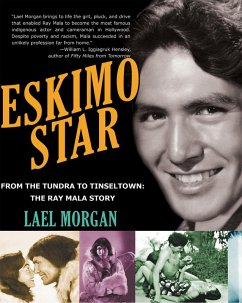The blazing marquee of the plush Astor Theater in New York City billed the 1933 premier of Eskimo as "THE BIGGEST PICTURE EVER MADE," propelling a 27-year-old Inupiat Eskimo from Candle, Alaska, to overnight stardom. The handsome actor was not only the first Alaskan to become a Hollywood movie star but also the first non-white actor to play in a leading role. This is the story of Ray Wise Mala, the talented and enterprising son of an itinerant Russian trader and an Eskimo mother. Mala became part of the white man's world but for most of his life struggled to find a place in it, discriminated against because of his mixed race and his father's Jewish faith. At age 16, Mala got his break in Alaska in 1921 when hired to help film Primitive Love in which he was given a role. Mala appeared in more than 25 films over the next three decades, playing Hawaiians, South Pacific Islanders, American Indians, and other "exotics." Mala was a generous, sophisticated, self-made man from humble origins who straddled the gap between two cultures, never forgetting the debt he owed his own. Eskimo Star includes many historic photos and colorful movie posters.
Dieser Download kann aus rechtlichen Gründen nur mit Rechnungsadresse in A, B, CY, CZ, D, DK, EW, E, FIN, F, GR, H, IRL, I, LT, L, LR, M, NL, PL, P, R, S, SLO, SK ausgeliefert werden.


